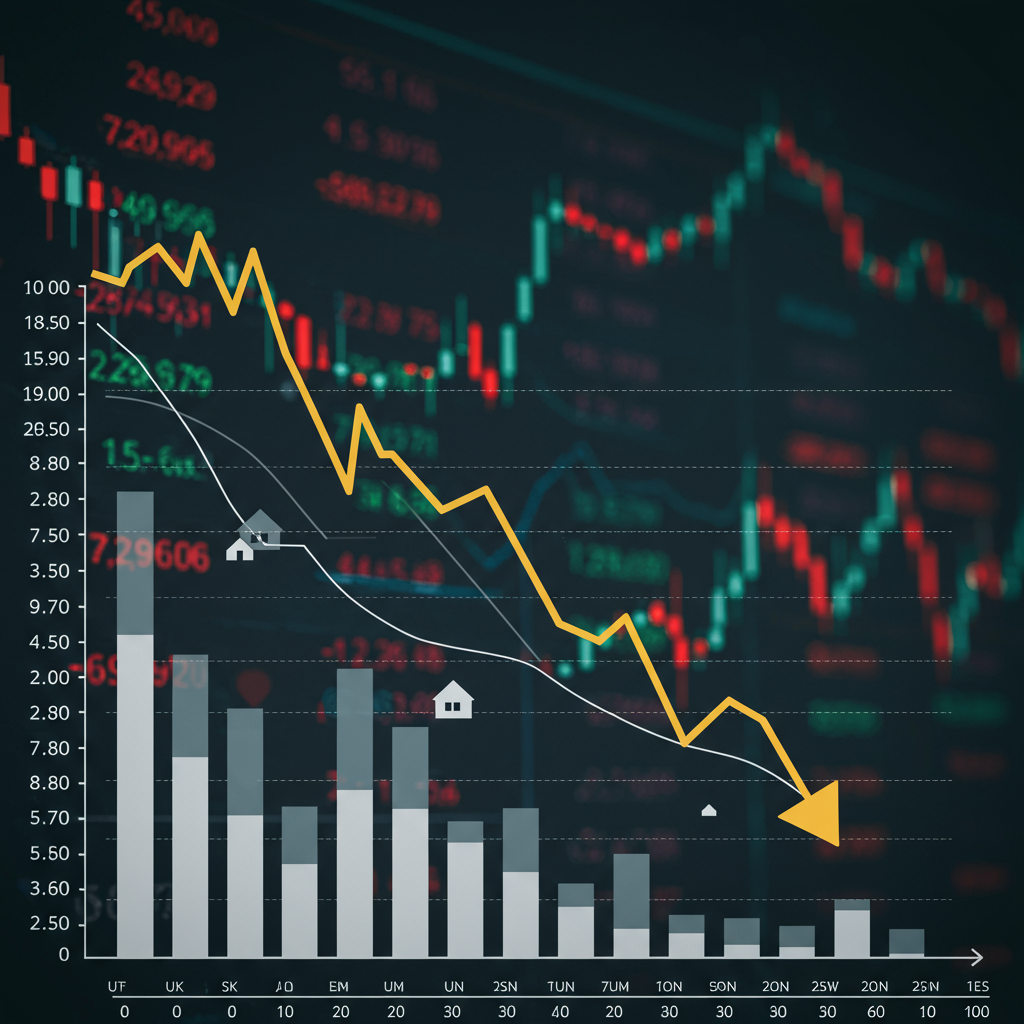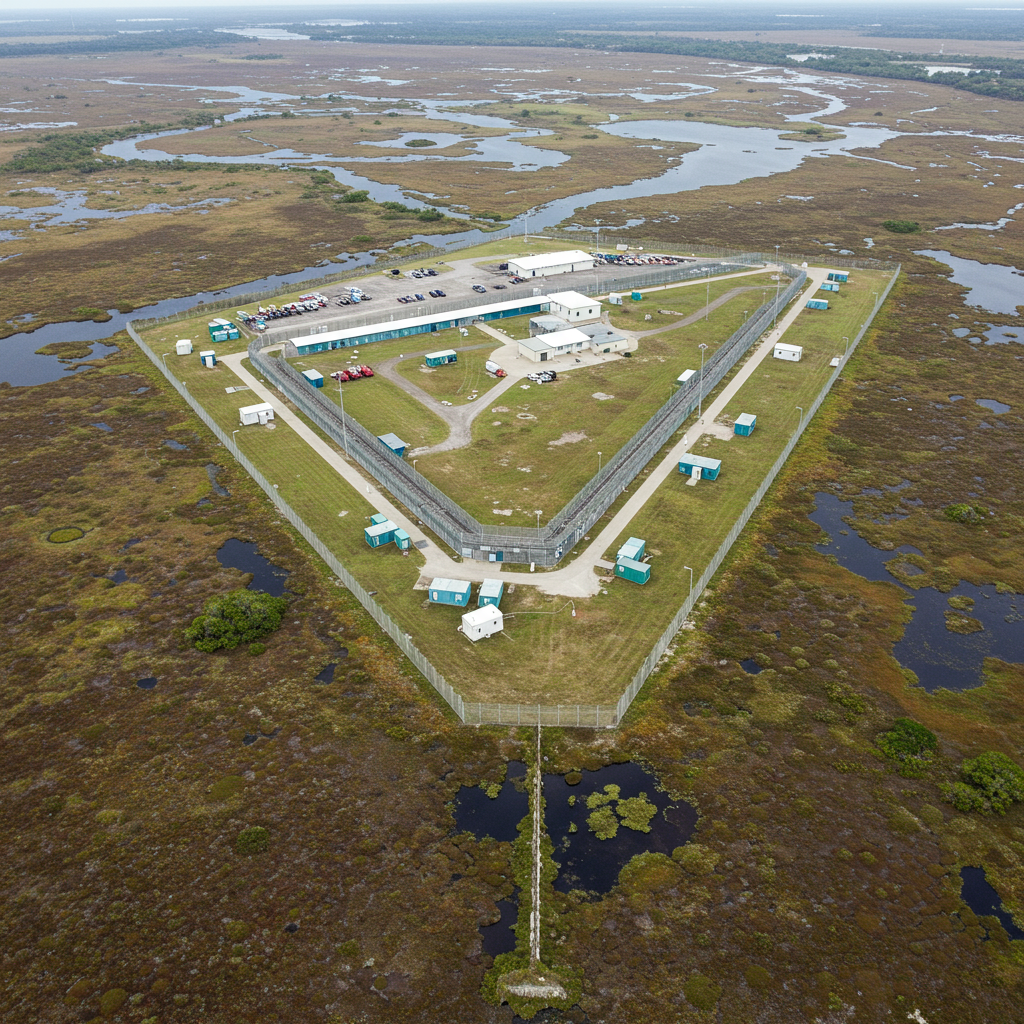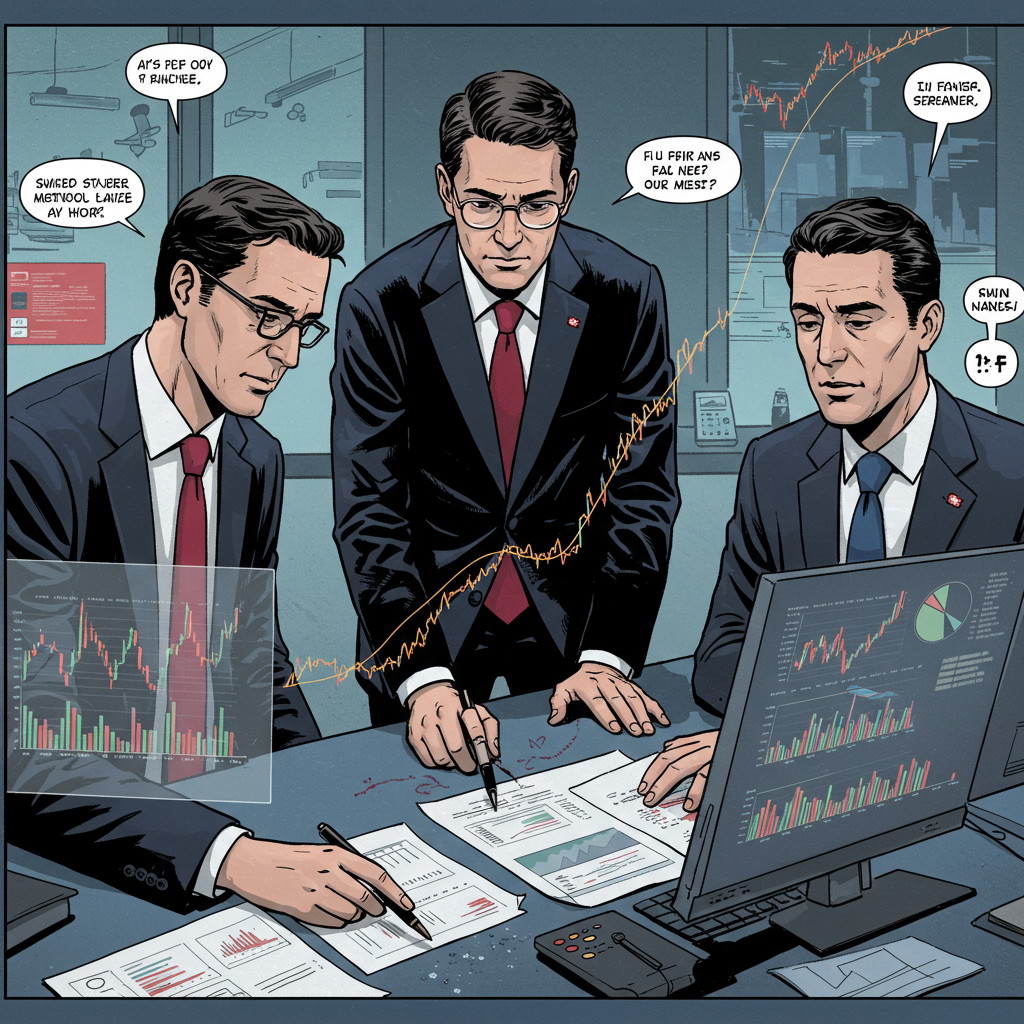Former President Donald Trump has issued a direct challenge regarding the future leadership of the nation’s central bank, signaling he will only appoint a Federal Reserve chair committed to lowering interest rates. This declaration underscores his long-standing desire for looser monetary policy and sends a clear message to potential candidates and global markets alike: align with his rate-cutting agenda or don’t expect the job. It’s a significant escalation in his pressure campaign on the Fed, setting the stage for potential clashes over the institution’s independence and the direction of the U.S. economy.
Trump’s Unwavering Push for Lower Rates
Donald Trump has been outspoken for years about his view that the Federal Reserve, and specifically its current chair, Jerome Powell, has kept interest rates too high. He argues that lower borrowing costs are essential to fuel economic growth, reduce the national debt burden through lower interest payments, and maintain American competitiveness on the global stage. This stance was a consistent theme throughout his first term and has resurfaced as a key point of his economic platform looking ahead.
His recent statements crystallize this position, particularly concerning the appointment of the next Fed chair. Speaking from the Oval Office, Trump made his expectations explicit. He stated plainly that if a candidate is expected to maintain current rate levels, he would not consider them for the position. Instead, he would actively seek someone enthusiastic about implementing rate cuts. This represents a more direct and public commitment to a specific monetary policy outcome tied to future leadership choices than typically seen from presidential candidates regarding the ostensibly independent central bank.
Trump’s perspective contrasts sharply with conventional wisdom surrounding the Federal Reserve’s mandate, which emphasizes managing inflation and employment levels independently of political influence. His focus remains squarely on stimulating growth through lower borrowing costs, viewing current rates as an impediment rather than a tool for economic stability.
Escalating Pressure and Political Alignment
The push for rate cuts is no longer solely coming from the former president himself. There’s a noticeable shift this time around, with senior administration officials and some Republican lawmakers joining the chorus. This unified front adds weight to the campaign, demonstrating a coordinated effort to influence the Fed’s decisions and potentially pave the way for future changes. This marks a departure from his first term, where his criticisms of Chair Powell often seemed more isolated, though persistent.
This broader pressure highlights the political dimension of monetary policy debates. While the Fed aims to make decisions based purely on economic data and analysis, public and political commentary invariably enters the discussion. Some Republican figures, like Senator Bernie Moreno of Ohio, have echoed concerns about interest rates and their impact alongside other economic issues like tariffs, signaling that these topics will be central to future policy discussions and potentially future Fed appointments.
Historically, there has been strong bipartisan support for maintaining the Federal Reserve’s independence to shield it from short-term political pressures that could lead to instability or inflation. However, Trump’s approach challenges this norm, suggesting that the Fed’s monetary policy should actively align with the administration’s economic goals, specifically lower rates. This raises concerns among economists and market observers about the potential for political interference to undermine the Fed’s credibility and effectiveness, drawing parallels to historical periods where political influence was perceived to compromise monetary stability, like the inflationary era of the 1970s under Arthur Burns.
Jerome Powell and the Fed’s Measured Approach
Current Federal Reserve Chair Jerome Powell’s term is set to expire in May 2026. Despite the ongoing pressure from Trump and others, Powell has consistently maintained that the Fed’s decisions on interest rates are guided solely by economic data and the central bank’s dual mandate: achieving maximum employment and stable prices (low inflation). The Fed has held its benchmark interest rate steady at a range of 4.25% to 4.5% for several meetings, resisting calls for immediate cuts.
Powell and the Federal Open Market Committee (FOMC) are taking a cautious, data-dependent approach. They are specifically waiting for clearer signals that inflation is sustainably moving towards their 2% target. While recent inflation numbers have shown improvement from previous highs, there remains uncertainty, particularly regarding the potential future impact of tariffs.
The Tariff Dilemma: Inflation vs. Slowdown Risk
A significant factor complicating the Fed’s decision-making is the imposition of widespread tariffs, a key policy tool favored by Trump. Tariffs create a unique dilemma for the central bank because they introduce conflicting economic pressures. On one hand, tariffs increase the cost of imported goods, which is expected to push inflation higher as businesses pass these costs onto consumers. On the other hand, tariffs can also slow economic growth by burdening households with higher prices and potentially reducing overall consumer demand, which could argue for lower rates to stimulate activity.
Fed officials are grappling with how quickly and significantly these tariff costs will work their way through the economy and impact retail prices. While the pass-through has been slower than some initially expected, possibly due to businesses absorbing costs or using existing inventory, officials anticipate a “meaningful amount of inflation” could still emerge as supply chains adjust. Business surveys suggest companies are planning to or already are passing on higher costs. Models predict noticeable retail price increases if even a portion of tariff costs are transferred to consumers. Historical examples, like the lagged effect of washing machine tariffs in 2018, reinforce the Fed’s caution, preferring to wait and see rather than cut rates prematurely only to see inflation reignite.
Economic Signals: A Mixed Picture
The economic landscape the Fed is navigating is complex and presents mixed signals. Recent data shows relatively tame inflation in the short term, but future forecasts incorporating tariff impacts suggest prices could rise, potentially pushing inflation above the Fed’s 2% target next year. Meanwhile, signs of a cooling economy are also appearing. Consumer spending growth has moderated, with some discretionary prices falling, and surveys indicate consumers may cut back spending.
The labor market, while historically strong with low unemployment, shows signs of slowing. Job growth is becoming more concentrated in specific sectors, the labor force participation rate has fallen, and metrics like longer unemployment durations, fewer voluntary quits, and a lower hiring rate suggest a tightening job market where workers have less leverage and greater job security concerns.
This blend of potential future tariff-driven inflation and emerging signs of economic moderation makes the Fed hesitant. They need to balance the risk of cutting too early and letting inflation get out of control against the risk of keeping rates too high for too long and tipping the economy into recession. This uncertainty is reflected in differing views even within the Fed itself, though the current consensus leans towards holding rates until there is more clarity. Economic growth forecasts have been revised downwards, reflecting concerns about the drag from factors like tariffs.
Navigating Political Pressure and Independence Concerns
The political pressure exerted on the Federal Reserve is not new, but the directness and public nature of Trump’s demands, particularly linking future appointments to policy stances, are notable. The core principle of Federal Reserve independence is seen by many as crucial for effective monetary policy, ensuring decisions are made based on economic analysis rather than short-term political expediency. Economists argue that undermining this independence could lead to policy errors that result in persistent inflation or instability.
There are legal hurdles to removing a Fed chair; they can only be removed “for cause,” which typically does not include differing opinions on monetary policy. No Fed chair has ever been fired. Jerome Powell, who was originally nominated by Trump and later re-nominated by President Biden, has indicated his intention to serve his full term, which runs through May 2026. Some analysts suggest that Trump’s public attacks on Powell may be a strategic move to create a scapegoat if the economy experiences difficulties or recession, particularly if those issues are perceived to be linked to the uncertainty created by policies like tariffs.
What’s Next? Potential Paths for Interest Rates
Given the current economic uncertainty, particularly around the full impact of tariffs, the timing of any future Federal Reserve interest rate cuts remains a subject of debate among economists. While the Fed’s own projections have recently suggested the possibility of a couple of rate cuts later this year, and perhaps one more in 2026, this outlook is reportedly subject to differing opinions among policymakers and could easily shift based on incoming data.
Some experts anticipate cuts could begin later this year if the economic slowdown signals become more pronounced or if the tariff impact on inflation proves less severe than feared. Others believe cuts may not happen until 2026, emphasizing the Fed’s likely preference to err on the side of caution regarding inflation. The reason for any future cuts is also critical: cuts made because inflation is under control and the economy is strong are desirable, whereas cuts forced by a weakening economy signal potential trouble. The upcoming Fed economic projections and Chair Powell’s statements will provide further insight into the central bank’s thinking.
Impact on Your Wallet: Borrowers and Savers
For average Americans, the Fed’s decisions have tangible effects. Current higher interest rates mean borrowing costs for mortgages, car loans, and credit cards remain elevated. Credit card APRs, for instance, are at historically high levels. For borrowers, this environment underscores the importance of prioritizing paying down high-interest debt. Reviewing budgets to find areas to cut spending can free up funds for debt reduction.
On the flip side, savers benefit from higher rates on savings accounts, money market accounts, and certificates of deposit (CDs). While the highest promotional rates seen earlier are less common, it’s still possible to find competitive yields significantly above the inflation rate, allowing savings to grow risk-free. Savers should continue shopping around for the best rates, ensuring funds are FDIC or NCUA insured. However, if the Fed does eventually cut rates, these savings yields are likely to decrease.
Frequently Asked Questions
Why does Donald Trump want the Fed to cut interest rates?
Former President Trump believes that lower interest rates stimulate the economy by making borrowing cheaper for businesses and consumers. He argues that current rates are too high, hindering growth, increasing the national debt burden through interest payments, and making the U.S. less competitive globally. He views rate cuts as a tool for economic expansion.
What factors make the Federal Reserve hesitant to lower rates?
The Federal Reserve is primarily concerned with controlling inflation and maintaining a stable price level, alongside promoting maximum employment. They are currently hesitant to cut rates due to uncertainty about future inflation, particularly from the impact of tariffs. They also need to see convincing evidence that inflation is sustainably returning to their 2% target without risking it re-accelerating.
How do current high interest rates affect consumers and businesses?
High interest rates increase borrowing costs for consumers, leading to higher payments on mortgages, car loans, and credit card debt. This can dampen consumer spending. For businesses, higher rates increase the cost of capital for investments, potentially slowing expansion and hiring. Conversely, savers benefit from higher yields on bank accounts and investments like CDs.
In conclusion, former President Trump has clearly articulated his expectation that the next Federal Reserve chair will be committed to lowering interest rates, intensifying the political focus on the central bank’s monetary policy. This stance puts him at odds with the Fed’s current cautious approach under Chair Jerome Powell, who is navigating a complex economic environment marked by potential tariff-induced inflation and emerging signs of a slowdown. The tension between political goals and the Fed’s independent mandate highlights ongoing debates about the central bank’s role and sets the stage for potential shifts in U.S. monetary policy depending on future leadership and economic developments.
Word Count Check: 1103




